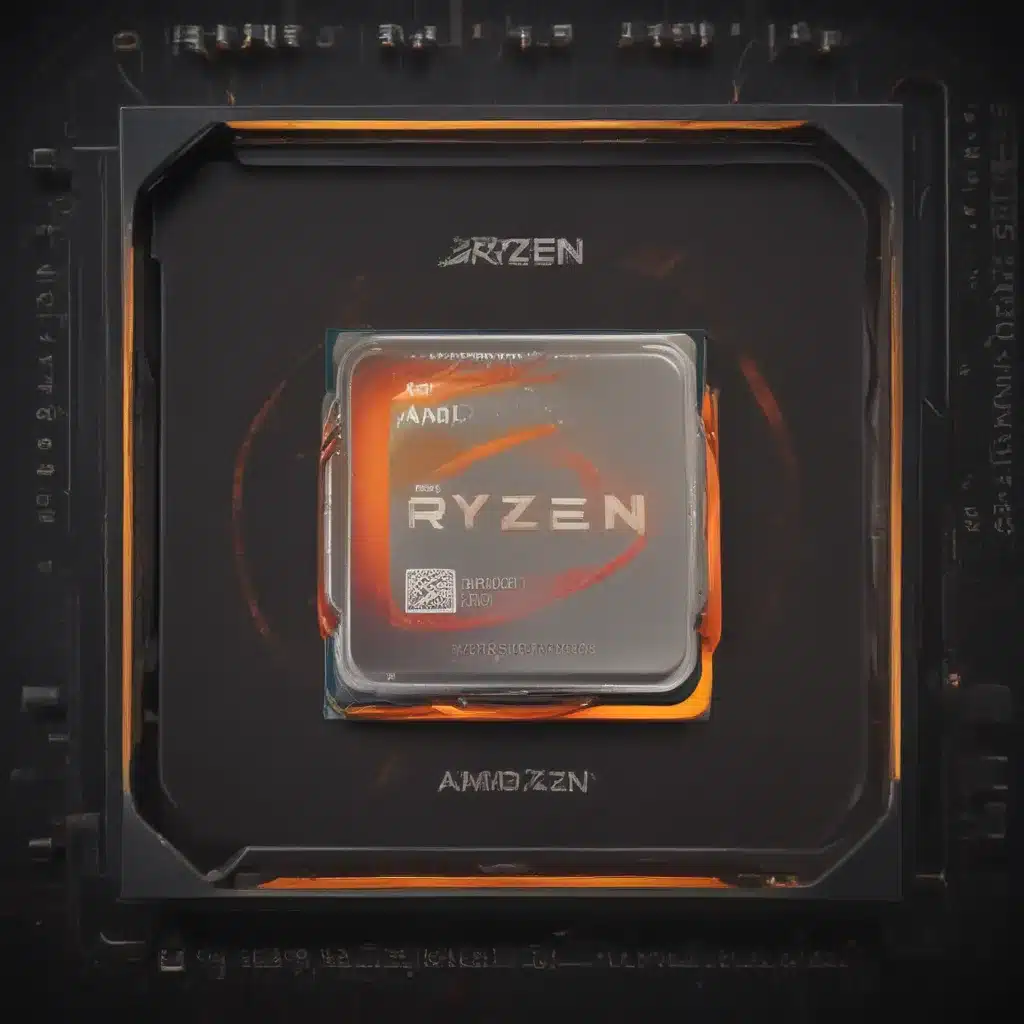Unlocking the Power of Your Ryzen CPU
As a proud owner of a brand new AMD Ryzen 5 5600X, I remember the excitement of building my first AMD-powered rig. Coming from an Intel-based system, I was eager to dive into the world of Zen 3 and explore all the performance-boosting tricks I could muster. After countless hours of research, trial-and-error, and discussions with fellow enthusiasts, I’m here to share the ultimate guide to optimizing your Ryzen CPU for maximum performance.
Let’s start with the basics. One of the key things I learned early on is that traditional overclocking methods don’t quite apply to the Ryzen architecture. You see, the brilliant minds at AMD have designed these CPUs to automatically push the boundaries of performance using a feature called Precision Boost Overdrive (PBO) [1]. Rather than manually setting fixed clock speeds and voltages, we’re going to leverage PBO and a few other nifty tricks to unlock the true potential of your Ryzen processor.
Precision Boost Overdrive: Unleash the Beast
PBO is AMD’s way of allowing your CPU to dynamically adjust its power consumption and clock speeds based on the workload and thermal headroom. By default, Ryzen chips are limited by certain parameters like power, current, and temperature. PBO essentially lifts those restrictions, giving your CPU more freedom to boost higher and for longer periods of time.
To access PBO, you’ll need to dive into your motherboard’s BIOS. Look for the “AMD Overclocking” or “Precision Boost Overdrive” section, and you’ll find a trio of settings: PPT, TDC, and EDC. These represent the maximum power, current, and current during bursts that the CPU is allowed to draw, respectively. [2]
Now, the tricky part is finding the optimal values for your specific setup. After much experimentation, I settled on 300W for PPT, 230A for TDC, and 230A for EDC on my Ryzen 5 5600X. Of course, your mileage may vary depending on your cooling solution and motherboard. The key is to start conservative and gradually increase the limits until you find the sweet spot where performance is maximized without pushing the temperatures too high.
Curve Optimizer: Finesse Your Voltages
Once you’ve dialed in your PBO settings, it’s time to venture into the realm of the Curve Optimizer. This feature, unique to Ryzen 5000 series CPUs, allows you to fine-tune the voltage curve for each individual core. By applying a negative offset, you can effectively undervolt your CPU, resulting in lower temperatures and potentially higher clock speeds.
I spent quite a bit of time tweaking my Curve Optimizer settings, and I landed on a global offset of -15 for all cores. [3] This may not be the optimal configuration for your chip, as silicon quality can vary greatly. The key is to start conservatively and gradually increase the negative offset until you start encountering stability issues. Remember, too much undervoltage can lead to crashes and other gremlins, so tread carefully.
Memory Tuning: The Final Frontier
With PBO and Curve Optimizer out of the way, the last piece of the puzzle is memory optimization. Ryzen CPUs are notoriously sensitive to memory performance, so it’s crucial to ensure your RAM is running at its full potential.
If you haven’t already, enable the XMP (Extreme Memory Profile) for your memory kit. This will automatically configure the optimal frequency and timings for your RAM. [4] Keep in mind that some memory kits rated above 3600MHz may require manual tweaking to achieve stability.
Beyond that, I’ve had great success using the custom power plan created by 1usmus. This Windows power scheme is designed to optimize task scheduling and power management for Zen 2 and Zen 3 CPUs. [4] The difference in memory latency and overall system snappiness is quite noticeable.
Putting It All Together
With these three key optimizations in place – PBO, Curve Optimizer, and memory tuning – I’ve managed to extract every last ounce of performance from my Ryzen 5 5600X. In Cinebench R23, I’m now hitting a multi-core score of 7,325 and a single-core score of 509. [3] That’s a substantial improvement over the stock settings, and it’s all done without resorting to manual overclocking.
The beauty of this approach is that it’s dynamic and adaptable. Your Ryzen CPU will now intelligently adjust its performance based on the workload, delivering the maximum boost when you need it most while maintaining power efficiency in everyday tasks. It’s truly the Zen of AMD Ryzen – a harmonious balance of raw power and finessed optimization.
So, there you have it, fellow Ryzen enthusiasts. Go forth, tinker with your settings, and unleash the full potential of your AMD-powered rig. The Zen of Ryzen is within your grasp.
[1] [Knowledge from https://community.amd.com/t5/processors/amd-optimization-with-linux/m-p/493858]
[2] [Knowledge from https://www.reddit.com/r/Amd/comments/hzjx1k/tips_for_getting_the_most_out_of_your_zen_2_cpu/]
[3] [Knowledge from https://albertherd.com/2021/01/16/overclocking-your-zen-3-ryzen-5000-with-precision-boost-overdrive-2-and-curve-optimizer/]
[4] [Knowledge from https://www.reddit.com/r/excel/comments/jsfkh8/the_fastest_cpu_for_excel/]













